City Guide
Fateh Burj Mohali : The Tallest Minar in India
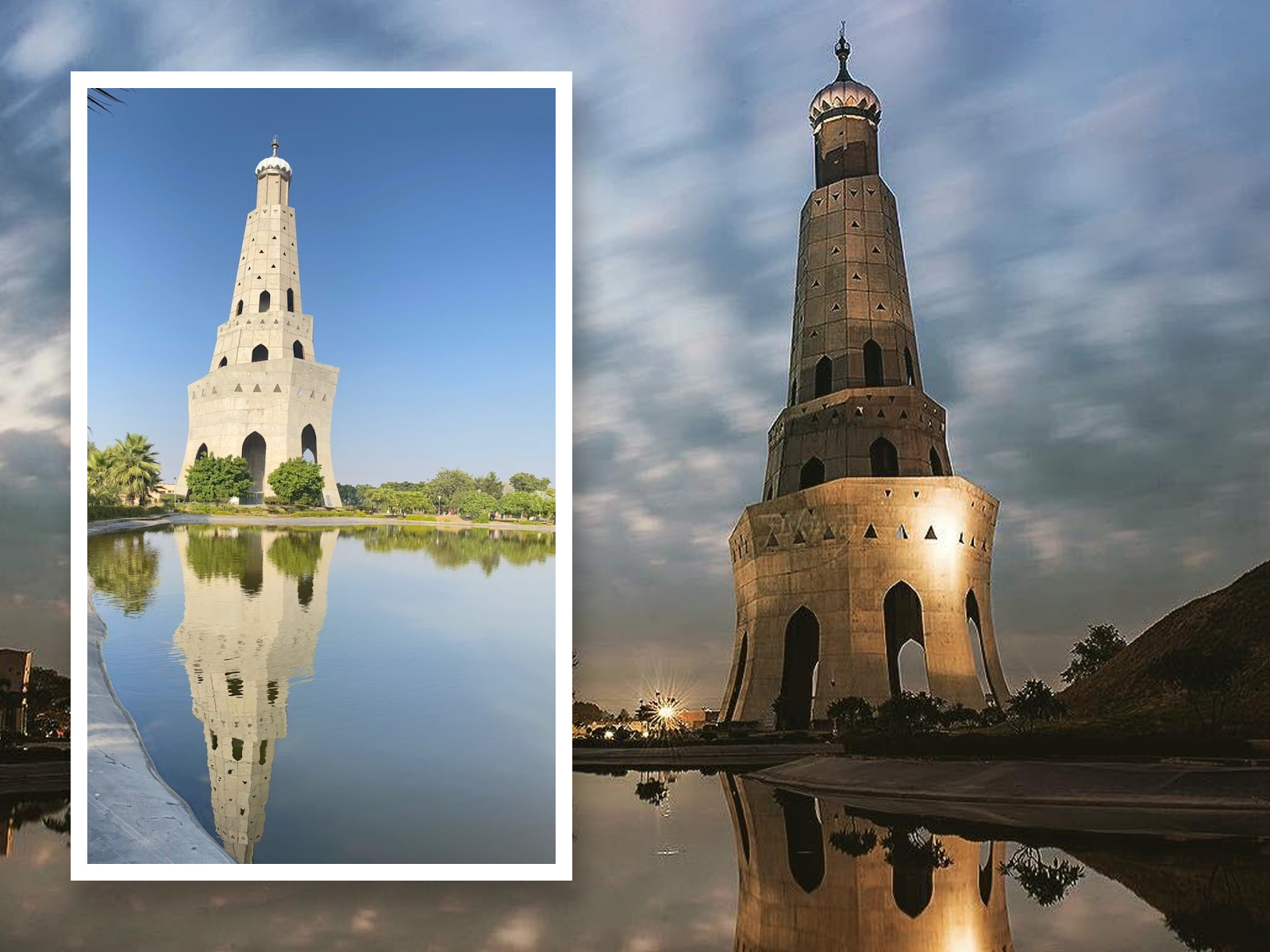
Fateh Burj Mohali is known to be one of the tallest towers in India, which has religious significance for many. Most of you would possibly have heard about the majestic victory tower of India, which is at times acknowledged as “Chappar Chiri” as well.
The Fateh Burj is 328 feet high, India’s highest, and stands as an emblem of the historical victory of Sikh junction rectifiers by the good General Banda Singh Bahadur. Moreover, it is set within the historical village of Chappar Chiri in the SAS Nagar district, Punjab.
Additionally, it is a heritage memorial to commemorate the ending of Sikh individual Banda Singh Bahadur and his troopers over the Mughals in 1710. Chappar Chiri is made on twenty acres of land and welcomes a lot of visitors who are there to honor the valorous Banda Singh Bahadur.
It houses Minar-e-Fateh, a museum, and an outside area for light and sound shows to depict the life and philosophy of Sikh warriors. Now that you have all interested in visiting the place and discovering the past, reading the entire article is a must. Plus, the article will take you on an imaginary tour of Fateh Burj Mohali.
Historical Background of The Chappar Chiri Battle
Chappar Chiri village is on the Kharar-Banur Road, recently named Banda Singh Bahadur Road formally. It is located on the outskirts of the city of Mohali, many kilometers from Landran and twenty kilometers from Sirhind. And it was named after Banda Singh Bahadur because he was one of the foremost revered Sikh warriors who won a decisive battle against Wazir Khan, commander of the Mughal army.
Additionally, Banda Singh Bahadur defeated Wazir Khan in a struggle in 1710 to set up Sikh rule. Fateh Burj became the built-in reminiscence status quo of Sikh rule in India in 1711. For this, it is taken into consideration, and the tallest victory tower is positioned in Mohali in Punjab. With a peak of 328 feet, it stands in the center of the sector where the struggle was fought.
The Battle of Chappar Chiri was fought between Khalsa and Mughal forces in May 1710 and was led by Banda Singh Bahadur under the banner of Kesari Nishan Sahib. It was for the first time in Indian history that the Khalsa Republic was established in the Land of the Five Rivers, Punjab, after defeating the Mughal forces.
The Battle took place on May 12, 1710, when the Sikhs succeeded in occupying Sirhind on May 14, 1710. Wazir Khan was killed in the battle, which led to the defeat of the Mughal army.
Sirhind was a very beautiful and booming town during the war. There were beautiful large landscaped gardens, forts, elegant Havelis, and mansions built by the Mughals. However, after winning the battle, the Sikhs demolished the gardens and destroyed the fortresses, Havelis, and places.
Especially all the places that reminded them of the tortured sacrifices of the young sons of their 10th Guru, Guru Gobind Singh. After Wazir Khan’s defeat, Banda Singh succeeded in establishing a Sikh rule.
It’s aforesaid that once Wazir Khan came to grasp that Banda Singh Bahadur had arrived, he selected a site for the war that was plain on one side and had a rough parcel of land on the other.
Keeping the snug plain site for himself, he left the rough terrain for Sikh forces. Banda Bahadur smartly used it as a chance to ascend the very best mound and perceptive the enemy’ line-up along with his innovative war strategies.
In & Around Chappar Chiri
In the annals of Sikh records, Chappar Chiri was a unique place. For brave Sikh warrior Banda Singh, he has made history in Indian records. This extremely good warrior changed into an instrumental withinside of the status quo of Sikh land.
Gurdwara Baba Banda Bahadur is positioned among the villages of Chappar Chiri, Ban, and Chhoti with the aid of using the facet of a metalled hyperlink avenue, becoming an important member of them.
The gurdwara turned into setup withinside the Fifties with the aid of using each village to mark the ancient victory event. A new corridor was built right here in 1970 in which the Guru Granth Sahib is now seated, even as the vintage building serves as a number one school.
Authorities lately brought a small room right here that serves as Baba Banda Singh Bahadur Library. The gurdwara is being ruled with the aid of a committee representing the 2 villages.
Speaking of closed facilities, the cafeteria, which operated for two years, is now closed as no new contract has been placed for it. (Which is operating) Seen from a distance with its spectacular and proper lighting and the availability of clean water, Fateh Burj Mohali should definitely be your next place to go when you are in the city.
Besides, the Fateh Burj is the principal enchantment of the memorial. So, the victory tower has attracted travelers from all around the international community to witness the martyrdom of Sikh freedom fighter Bandar Singh Bahadur.
Grandeur Architectural Details
The Sikh dome is located on the pinnacle of the Fateh Burj with Khanda and a Kalash. Also, the openings and home windows of the tower are made in a triangular form that symbolizes the outlet that was formerly utilized by the military to area cannons and guns.
Moreover, its shape has an octagonal form divided into three sections that may, without problems, face the excessive force of the winds. During the evening, the Minar appears impressive with sparkling and trendy lighting.
Along with that, the Minar has an artificial pond and an almost manicured landscape around it. The layout of the struggle fare memorial is a small duplicate of Chappar Chiri with small constructed hilltops.

Statues of Baba Banda Bahadur Singh and different warriors are positioned on each hilltop. Beneath the statues, they’ve halls and rooms that include a museum to offer records about the past. On the pinnacle of the Minar, you’ll have a look at a dome that is saved, which indicates the Sikh culture. The entire setup of the struggle fare memorial will transport you to history.
It is likewise ready with a superior era that accommodates an open-air theatre. On unique occasions, the Fateh Burj lights up with exclusive laser visuals and sound effects. Moreover, the contemporary structure has a greater said fashion throughout the country, developing a brand new identification for India because it bridges the space between history and modernity.
Interesting Interiors at Fateh Burj Mohali
The architect of Fateh Burj Mohali has recreated the entire panorama of Chappar Chiri with mounds and sand dunes (tibbas) around the tower. These mounds are further covered with grass alongside the statues of Banda Bahadur, and his five generals are perched atop.
Moreover, these mounds, which have a huge water frame, had been organized naturally with meandering footpaths all around them. All the important infrastructure has been constructed below those mounds. The statues of Sikh warriors had been sculpted by Prabhat Rai, a famed Indian sculptor.
The victory tower is octagonal in plan with reinforced-concrete middle and partitions that are supported on metal columns. The composite shape makes it proof against lateral and seismic forces, making it sturdy and sufficient to not fall off by excessive wind pressure.
The design conception has been extracted from the pages of history. Besides, not many know that Banda Bahadur’s forces used the present mounds of the earth as a defense. Sikh troopers positioned themselves behind these mounds and won the war through a guerrilla attack.
The tower was finished in 2011 by Architects/Landscape Designers Renu Khanna and Associates, Panchkula. It was sculpted by Prabhat Rai, and the structural specialists blanketed Pankaj Chopra and Dr. Ramana. Finally, the agreement was signed through Larsen & Toubro.
Fateh Burj Mohali’s Architectural Features
The Burj has overall three memories at 67 toes, 117 toes, and 220 toes. The 328-foot Burj is the tallest tower in India. The importance of primary storey marks the victory of Samana, 2d storey for the victory of Sadhaura, and the 3rd storey for Sirhind fought at Chappar Chiri. Overall, the region depicts the battle scene of that time.
Why is Fateh Burj in Mohali So Attractive?
Statues of Sikh War Heroes
The monument has six mounds with statues of Banda Singh Bahadur and his five generals. They are Bhai Fateh Singh, Bhai Aali Singh, Bhai Maali Singh, Bhai Baaj Singh, and Bhai Ram Singh. The rooms under the hills that were supposed to serve as museums are empty and closed.
Also, Fateh Burj Mohali serves as a hallmark of the memorial as a victory tower. It glorifies the valor and the victory of the great general extremely well.
Small Lake & Park
There is a small lake and a well-maintained park across the tower. The best area for records lovers, families, and college students to feature their understanding approximately the wealthy records of Sikhs.
Furthermore, the implementing tower glorifies the bravery of the skin community in general. The average atmosphere signifying victory is created through channelizing winds among excessive mounds.
Moreover, the monumentality of the tower and the luxurious panoramas resonate with the structure of happiness.
The huge water frame creates a mirrored image of the victory tower, which adds so much natural beauty to the entire place. The small hills, with hanging statutes on top, appear as though a slice from the beyond records is served immediately to the spectators.
Not to miss the open-air theatre that faces the victory tower and its miles deliberate for growing thrilling mild and sound shows. With all its infrastructure installed, Baba Banda Singh Bahadur War Memorial, Chappar Chiri, Mohali these days serves as the main tourist attraction in Punjab.
Visiting time of Fateh Burj in Mohali
The traveling hours of the Burj are from 10 A.M. to 8 P.M. Visit this location at the time of sundown and sunrise. The impact of the daylight across the monument makes its appearance immensely beautiful.
Chappar Chiri witnesses heat temperatures in the course of the summertime. Therefore, the temperature may rise upto 44°C. Generally, it stays within the range of 35°C and 42°C in the course of this season. So, if you want to visit during this season, it is not really considered the most advantageous time for that. Meanwhile, during Mohali winters, the temperature ranges from 7 to 15 °C, making it one of the ideal times to plan a relaxed and cool day-out trip. Winters close from November to February. However, the satisfactory time to go to Chappar Chiri is between October and March.
People come right here with their circle of relatives and pals to spend a while together. The complete location is well-maintained and hygienic as well. To go to Fateh Burj, there may be no access charge and loose parking as well.
Project Details of Fateh Burj MOHALI
Name of project: Baba Banda Singh Bahadur War Memorial.
Location: Chappar Chiri, Sector 93, Mohali, Punjab.
Area of land: 20 acres.
Architects/Landscape Designers: Renu Khanna and Associates, Panchkula.
Sculptor: Prabhat Rai.
Structural consultants: Pankaj Chopra and Dr. Ramana.
Contractors: Larsen & Toubro.
Year of completion: 2011
Summing Up
Fateh Burj Mohali sees over 2 lakhs of visitors pass each year. Although the place has immense historical significance, there has been no initiative to engage the public or organize events here. The only show held here was a laser show in 2016 which marked Baba Banda Singh Bahadur’s 300th Shaheedi. This memorial has been nicely maintained via means of the Government of Punjab ever since its inauguration within the year 2011. It has lush greenery around the premises of the memorial.
Magnificent statues of Baba Singh with swords are displayed with pride. Moreover, strict guidelines are laid down to recognize the preservation of this memorial. Cleanliness and behavior guidelines for travelers are a must. Offenders are to be critically penalized. Littering around the base is one such offense.
This spot is administered and controlled with the aid of the State Government. So, it’s far open to site visitors without charge of any fees. This monument presents the struggles of the Sikhs at some stage in 1710. It is a memorial of excessive regard to the Sikh populace in addition to the patriots.
City Guide
Mohali Gets 17cr Traffic Infra Boost: Three New Roundabouts to Ease Airport Road Congestion
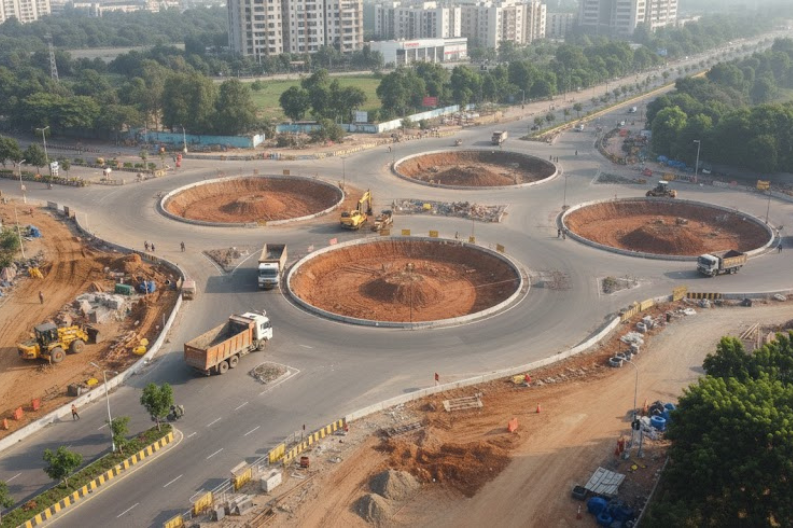
The Greater Mohali Area Development Authority (GMADA) has launched a 17cr traffic infra boost project to transform the city’s congested roads. MLA Kulwant Singh inaugurated the construction work on Tuesday, marking the beginning of major infrastructure upgrades across Mohali.
The project will create three new dumbbell-shaped roundabouts and upgrade several existing junctions. These improvements aim to reduce traffic jams, enhance road safety, and provide relief to thousands of daily commuters who face severe bottlenecks during peak hours.
Project Locations and Status
| Junction | Location | Status |
|---|---|---|
| New Roundabout 1 | Gurdwara Singh Shaheedan, Sohana | Work started |
| New Roundabout 2 | Light point (Sectors 68, 69, 78, 79) | Upcoming |
| New Roundabout 3 | Junction (Sectors 67, 68, 79, 80) | Upcoming |
| IISER T-Point | Airport Road | 90% complete |
| Cheema Boiler Chowk | City center | Upgrading |
| Quark City Junction | Near CP-67 Mall | Upgrading |
The most critical work will happen near Gurdwara Singh Shaheedan, where heavy traffic creates daily chaos. Additionally, the light point connecting multiple sectors has become notorious for long jams during morning and evening rush hours.
GMADA Executive Engineer Sukhwinder Singh Matharu explained that construction will proceed in four phases. Therefore, the authority has implemented a detailed traffic diversion plan to minimize public inconvenience. Consequently, vehicles from Kharar will now use the Purva Apartments road, which leads directly to the airport.
The entire project carries an estimated cost of Rs 17.71 crore. Moreover, authorities expect to complete the work by October 2026. However, vehicular movement should resume on most routes within one to one-and-a-half months.
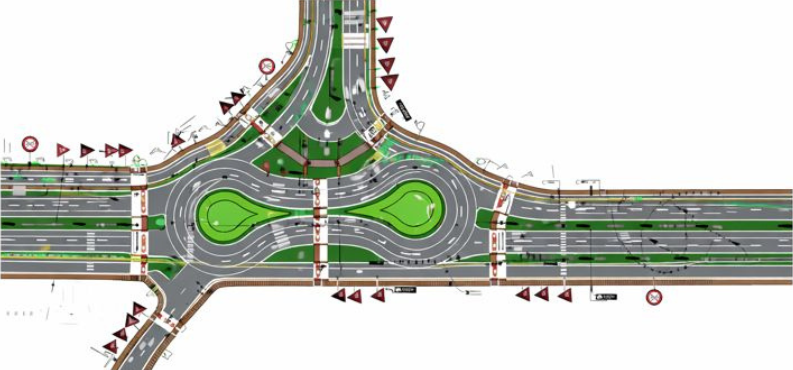
Source: The Indian Express
MLA Kulwant Singh announced additional development plans during the inauguration. He promised to propose naming the new roundabout after Amar Shaheed Jathedar Baba Hanuman Singh. Furthermore, he revealed plans to lay the foundation stone for a women’s hostel in Sector 66 soon.
Singh emphasized that five roundabouts have already been constructed in Mohali. The current project builds on this success to create a comprehensive traffic solution. Meanwhile, he clarified that ongoing anti-encroachment drives follow strict court directions and should not be politicized.
The expansion of the Mohali Municipal Corporation limits will further accelerate pending development works. As a result, residents can expect faster implementation of long-awaited infrastructure projects.
This 17cr traffic infra boost represents the Punjab government’s commitment to Mohali’s holistic urban development. The improvements will significantly enhance connectivity, reduce travel time, and make daily commutes safer for everyone.
City Guide
RSS Leader’s Son Shot Dead in Ferozepur: Woman Arrested for Sheltering Shooter
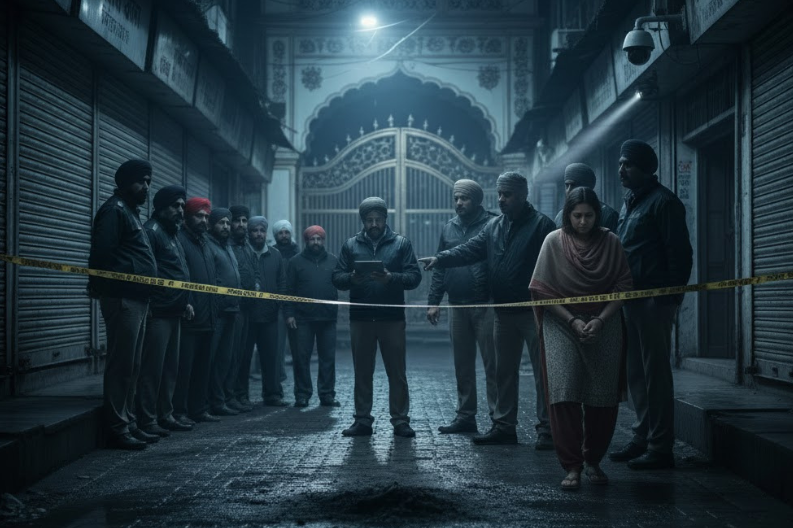
An RSS leader’s son shot dead in Ferozepur has triggered a major investigation, with police making multiple arrests in the case. Naveen Arora, a 32-year-old shopkeeper, died after two unidentified motorcycle-borne attackers shot him on November 15, 2025. The victim’s father, Baldev Raj Arora, has been associated with the Rashtriya Swayamsevak Sangh (RSS) for many years.
The incident occurred around 7 pm on Saturday evening near Sadhu Chand Chowk. Specifically, Naveen was walking from his dupatta shop in the main bazaar to his residence when the attack happened. Additionally, the assailants fired at him near Baba Noor Shah Wali dargah before quickly fleeing the scene.
One bullet struck Naveen in the head. Consequently, family members rushed him to a private hospital, where doctors declared him dead on arrival. Furthermore, the family initially refused cremation, demanding justice for their son.
Naveen’s grandfather, the late Dina Nath Arora, had also been a senior RSS leader in Ferozepur. Therefore, the family has deep roots in the organization spanning multiple generations. Meanwhile, Naveen himself served as an RSS volunteer alongside running his business.
Senior police officers, including SSP Bhupinder Singh and Deputy Superintendent of Police (City) Sukhwinder Singh, reached the spot immediately. Moreover, they formed multiple teams to identify and trace the suspects. Subsequently, police began scanning CCTV camera footage from nearby establishments to ascertain the identities of the killers.
The investigation has revealed several important developments. First, police arrested three persons in connection with the conspiracy: Jatin Kali, identified as the alleged mastermind, along with Kanav and Harsh. However, the main shooter, Nachhatar Singh from Jalandhar, remained at large initially.
In a significant breakthrough, Ferozepur police arrested a Ludhiana woman named Bhavna on November 23, 2025. Police sources revealed that she provided shelter to Nachhatar Singh after the murder. Additionally, she allegedly helped him flee after the crime. Consequently, authorities registered a separate case against her under the relevant sections.
Bhavna, daughter of Ashok Kumar and resident of Tibba Road in Ludhiana, is currently in custody. Furthermore, interrogation is underway, with investigators hoping for major breakthroughs. Police believe she played a crucial role in the escape plan.
SSP Bhupinder Singh explained the complexity of the case during a press meet. He informed media persons that the conspiracy appears far more organized than initially thought. Specifically, Jatin Kali allegedly orchestrated the plan for a payment of just ₹60,000-65,000. However, arranging professional shooters from Jalandhar and safe houses in Ludhiana points toward a larger network.
Investigators remain baffled by the sophistication of the escape plan. Therefore, they suspect involvement of an established gangster or influential outsider who provided logistical support and funding. Despite intensive raids, police have not apprehended any major gangster so far, deepening the mystery.
The murder triggered widespread anger among local traders and RSS workers. On Sunday, following the incident, markets wore a deserted look. Subsequently, shopkeepers closed their establishments completely on Monday, demanding immediate arrest of the assailants.
Heera Sodhi, a senior BJP leader from Ferozepur, confirmed the market closure. Similarly, senior RSS functionary Ashwani Dhawan urged authorities to take strict action against the perpetrators.
Punjab BJP chief Sunil Jakhar strongly criticized the state government over the incident. He alleged that gangsters are running a parallel government in Punjab. Additionally, he claimed Chief Minister Bhagwant Mann has failed to fulfill his responsibilities.
Jakhar stated that people of Punjab are being forced to live in an atmosphere of fear. Moreover, he alleged that the AAP government has completely failed to maintain law and order. He also claimed people receive threats and extortion calls every day.
Ranbir Singh Bhullar, AAP MLA from Ferozepur City, met with Naveen’s family members. Furthermore, he assured them of strict action against the accused. Meanwhile, SSP Bhupinder Singh also met the Arora family on Saturday evening, promising swift action.
Punjab BJP working president Ashwani Sharma condemned the murder, saying it was neither the first nor an isolated incident. He emphasized that a spree of murders targeting businessmen, athletes, youth, and common people raises serious questions about the government’s working style.
Union Minister of State (Railways) Ravneet Singh Bittu also reacted strongly. He described the murder as brutal and said it has shaken not only the Arora family but the entire Punjab. Additionally, he emphasized that people are feeling increasingly unsafe and need tougher action.
Police officials have assured that the arrest of the remaining accused, including Nachhatar Singh, is only a matter of time. Furthermore, they promised that the full conspiracy will soon be unraveled. Investigators continue gathering evidence through CCTV footage and eyewitness accounts.
The RSS leader’s son shot dead in Ferozepur case continues developing, with authorities working intensively to bring all perpetrators to justice and uncover the complete network behind this organized crime.
City Guide
Sacked Cop Gets Life Term for Woman’s Murder: Body on Bench

A Mohali court ruled that a sacked cop gets life term for woman’s murder, convicting dismissed Assistant Sub-Inspector (ASI) Rashpreet Singh in a 2022 case. Along with life imprisonment, the court also imposed a fine of Rs 40,000. The verdict came after he was found guilty of murder and destruction of evidence, though rape charges were not proven.
The case dates back to November 13, 2022, when 23-year-old nurse Naseeb Kaur went missing from her paying guest accommodation. The very next day, locals discovered her body in a pond at Sohana village under suspicious circumstances. Investigators later confirmed that Rashpreet had known the victim for years and shared a close personal link with her.
On the complaint of the victim’s father, police initially registered a rape and murder case against an unidentified person. However, during the investigation, Rashpreet, a resident of Sector 86, came under suspicion and was arrested. Evidence ruled out rape but clearly established murder and an attempt to erase proof of the crime.
After examining witness statements and case records, the court held Rashpreet guilty on September 8. Today, it announced the final sentence. The judge observed that crimes committed by law enforcement officers not only violate the law but also erode public trust, demanding strict punishment.
With this ruling, Rashpreet Singh will now spend his life in prison. For the victim’s family, it brings a measure of justice, while for society, the sacked cop gets life term for woman’s murder serves as a stern warning against the misuse of power.
-
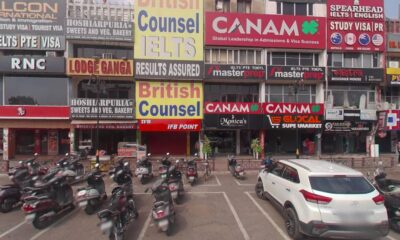
 City Guide3 years ago
City Guide3 years ago3B2 Mohali Market Shops: Discover 44 Hidden Gems
-

 Entertainment2 years ago
Entertainment2 years agoTop 15 Punjabi Models – Male and Female List
-

 Entertainment3 years ago
Entertainment3 years agoTop 11 Punjabi Comedians of All Time
-

 Jobs4 years ago
Jobs4 years agoTop 20 IT Companies in Mohali
-
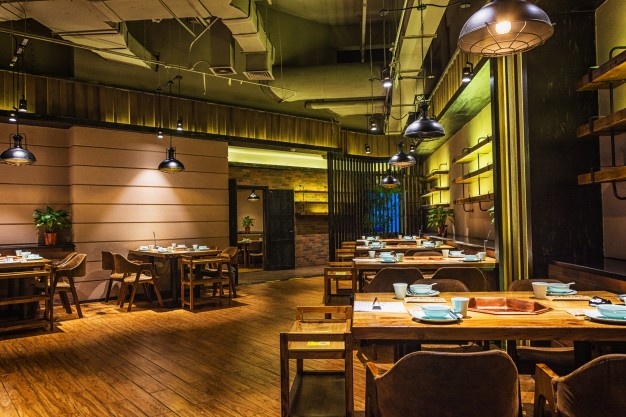
 Food4 years ago
Food4 years ago11 Best Restaurants in Mohali You Must Visit
-

 Food3 years ago
Food3 years agoTop 15 Cafes in Mohali you must visit
-

 Property2 years ago
Property2 years agoWho Lives In Homeland Mohali: Punjabi Celebrities, Business People…
-

 Education2 years ago
Education2 years ago10 Famous Punjabi Writers With A Great Impact On The Literary World


